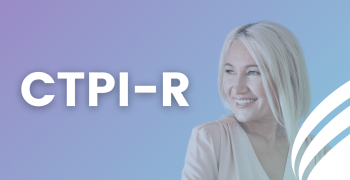
What if we used neuroscience to create high-performance teams? Ned Herrmann's model of brain preferences has proven useful in this area. Complementary, versatile and competitive teams are formed using the “total brain” method. The results are unequivocal in terms of the team's in-depth analysis of problems, and the quality of decisions, reducing the risk of error and achieving or even exceeding objectives. Let's take a look at what these brain preferences are and how they come into play in team composition.
The contribution of neuroscience
Brain preferences were defined by Herrmann, inspired by the work of Sperry and MacLean*. This concept, derived from neuroscience, has proven its importance when applied in different areas of learning, orientation, communication and HR. It is also highly recommended for team building.
According to Herrmann, for a team to be as efficient as possible, the “total brain” method must be applied. Concretely, it is necessary to understand and identify all the brain preferences in the team so that a project is thought and carried out perfectly, i.e. that it skilfully combines originality and feasibility, that the synergy between the members is a vector of productivity and where consistent planning ensures an optimal process. The team will be all the more complementary and efficient if everyone makes their contribution from the start.
What is a brain preference?
“Are you more left-brained or right-brained? It is often from this angle that brain preferences are generally approached. This question has some truth but remains incomplete when addressing brain preferences. Because in addition to this vertical fissure which divides the brain into two hemispheres, there is also a horizontal division which operates between the cortical and the limbic areas, separating that area of the brain into four quadrants.
Each of us has our own preferred quadrants that predispose us to think a certain way and perform certain tasks more easily. We automatically use these brain preferences when we have to communicate, learn, process new information, tackle a problem, make a decision, choose a working method, carry out a project… All of our daily behaviours are influenced by these brain preferences. Each quadrant has its own characteristics and becomes a unique asset to the team. Let's see these quadrants in detail.
The four profiles: the rain preferences and their contributions to a team
The right limbic: the analytic
A person who prefers using this quadrant will evolve in a logical and factual universe with ease. As a team, this realistic profile easily takes on the role of validating the feasibility of and naturally thinking about all the technical details. At ease with numbers and statistics and focused on problem-solving, they seek to maintain control and meticulously ensure that the project progresses smoothly.
His propensity for technicality and a rational approach to things could, however, make them seem reserved and too “mechanical”.
The right cortical: the planner
This born organiser is characterised by their propensity to plan everything, coordinate and supervise tasks. Following a specification, they know how to refer to the standardised procedures to keep the project in line with the guidelines and ensure compliance with standards and procedures. This administrator brings security, rigour and organisation to the team in order to structure a project according to the rules and to monitor its execution.
Sometimes too particular, the other profiles may clash with their lack of flexibility, openness to novelty and risk-taking.
The left limbic: the creative
This imaginative profile brings a freshness to the team with the originality of their ideas, their capacity for synthesis and innovation as well as their ability to see the project as a whole. Tangled up in a problem, the team can count on them to conceptualise things differently and find an original solution that goes off the beaten track. As a promoter of change, they will be able to use their long-term vision to engage the team in a way that is influential, in addition to giving meaning to the project.
Their idealistic and dreamy side can prevent them from pragmatically assessing the value of an idea, and their tendency to be distracted can easily cause them to drift from the initial plan.
The left cortical: the relational
This great communicator has a developed relational sense, supported by sensitivity and empathy. Intuitive and passionate, they advance according to their feelings, which is their compass for perceiving the environment and knowing how to react to it. With their sense of team, they are the binder of the group, who is committed to establishing a beautiful harmony and ensuring the integration of everyone. Tolerant, altruistic and warm, they bring compassion to the team, boost morale and motivate those who are losing momentum, while being concerned about everyone's well-being.
Their excessive enthusiasm and talkativeness can cause them to lose track of tasks and their emotionality can prevent them from considering the logical aspects of the project.
In practice
These preferences were presented independently to clearly identify their specificities, their contributions and their limits. That said, 60% of people have a double preference, often concentrated to the left or to the right, although crossings of hemispheres are possible. A third of the population has a triple preference. There are only 7% with only one preference and a rare 3% with all four preferences.
One would think that the latter could carry out a project on their own, which is not false. However, this totality of preferences means that each one remains unnoticed, unlike people with doubles, or even a highly developed preference. This suggests that each person has a role to play in a team, that they have one or two very strong preferences, or that they easily juggle three or four preferences, thus knowing how to find ground for communication with each member of the group.
Curious to know your preferences or interested in testing the composition of a “total brain” team? The CTPI-R of Central Test is a high-level personality test that identifies a person's preferred thinking styles and accurately calculates the preferred usage rate of each quadrant. Up to you!





